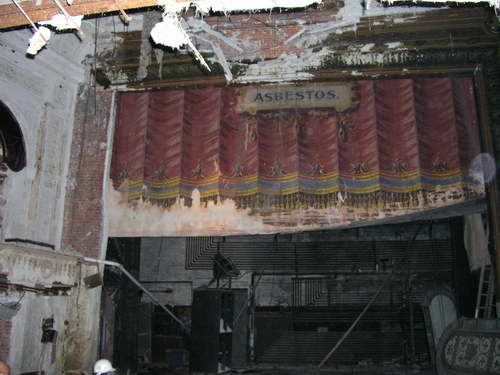vitanola
I'll Lock Up
- Messages
- 4,254
- Location
- Gopher Prairie, MI
The farm I grew up on (as well as the house across the street- the hired hand''s house- and the house down the road) had spring boxes for water before the city pipeline went through in 1900 (landowners were offered free water for the life of the house or $100). Whenever my parents dug 2.5 feet down, they inevitably found lead pipe, once out of about eight digs.
Kind of makes me shudder to think about... you could bend that pipe in your bare hands.
All this lead paint talk reminded me of a "so trivial ..." little corruption event that happened during our renovation. Because our apartment was built in 1928, to get our restoration plan approved by the NYC DOB, we had to have an asbestos inspection.
That seemed reasonable to me as we know it is very dangerous to breath that in and during demolition, we wouldn't want to release that into the air. Of course, we had our fingers crossed that we'd pass as asbestos remediation is very expensive.
The DOB required us to hire a NYC licensed asbestos inspection company for $900 (which I had to pay before he'd come - checked, they all worked this way for the exact same fee) - sounded high to me, but I figured it would be very comprehensive as we were demoing one bathroom, one kitchen and doing some other work throughout that would break into some walls (all of this was on the NYC architect approved plans I had to submit to the DOB before hiring the asbestos inspector - also not cheap).
On the day of the inspection, I met the inspector - nice enough guy - who came into the apartment, took three random one-inch deep wall samples that were not from the rooms being demo'ed. I mentioned this to him, he shrugged, put the samples in a bag, told me I'd get a report in a few weeks and left (was in and out in under 10 minutes).
I "passed" this complete nonsense of an inspection. Any one want to bet that $900 fee isn't part of a some graft / kickback scheme to someone in gov't? Being worried about the contractor's team, I mentioned all this to the contractor and he said, "good you passed, it's a pain if we have to do remediation." I said, but I don't want your guys to get sick. Again, "don't worry about, we'll wear masks." Which they half did, half didn't.
This is and example of a perfect partnership of corruption between the licensed private inspection companies and the gov't officials licensing them. I got cheated out of money and the workers it should have protected (and others in the building) didn't get protected.
I really don't know much about Lily Tomlin at all, but in my mind, she is a hero for having one of the best quotes ever:
"No matter how cynical you become, it's never enough to keep up." - Lily Tomlin
Well, I see that your contractor apparently did not explain what he was doing. My best friend has been an asbestos abatement contractor for more than thirty years. I've followed his work sufficiently to perhaps be able to better explain the porcess to you.
Asbestos is seldom found in 1920's and 1930's vintage plaster. Horse hair was generally used as the flock back then. That said, when asbestos is present in old plaster it is generally present in large amounts. Asbestos is, however, common in patching plaster and drywall joint compound used between 1950 and 1985 or 1986.
Your inspector should have done a visual inspection to determine the presence of asbestos floor tile (the old 9" square asphalt and vinyl tiles are always "hot" as are the mastics used with them). If he was familiar with your building and knew it to not contain asbestos in its original plaster an efficient inspector would only take samples of suspicious patches or possible new work. There would be little sense to take samples of untouched old work, unless the inspector simply wanted to run up your bill.
$300 per sample is a bit on the high side (for the Midwest), but seems reasonable for New York. You are paying no only for the sample and analysis, but for the permanent paperwork associated therewith. The laboratories are licensed and bonded, expensive requirements necessitated by the many attempts to game the system over the years.



